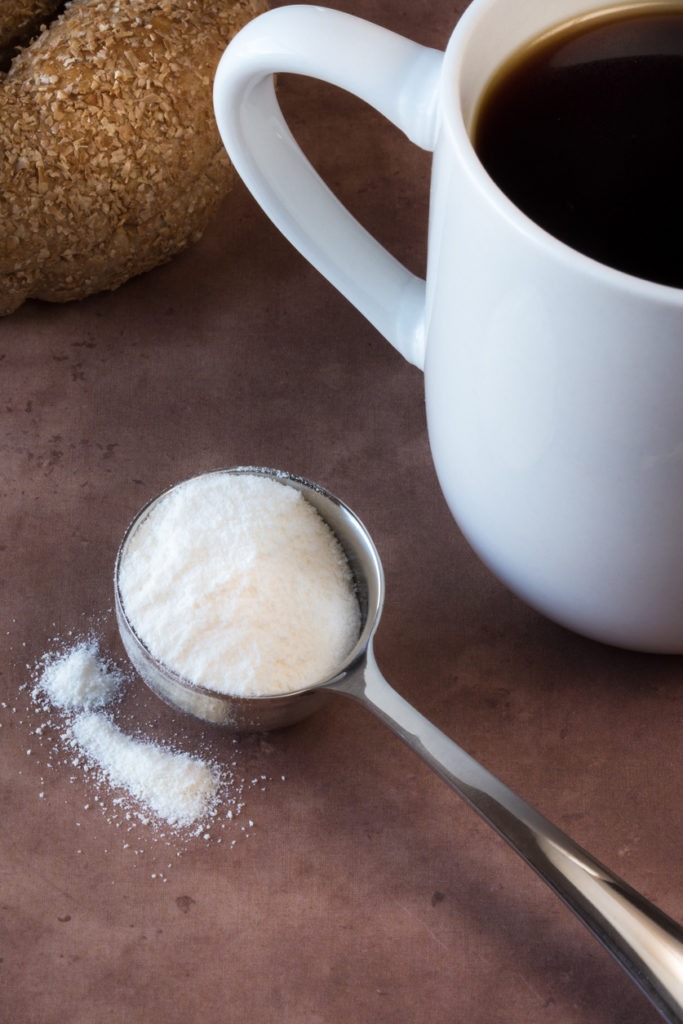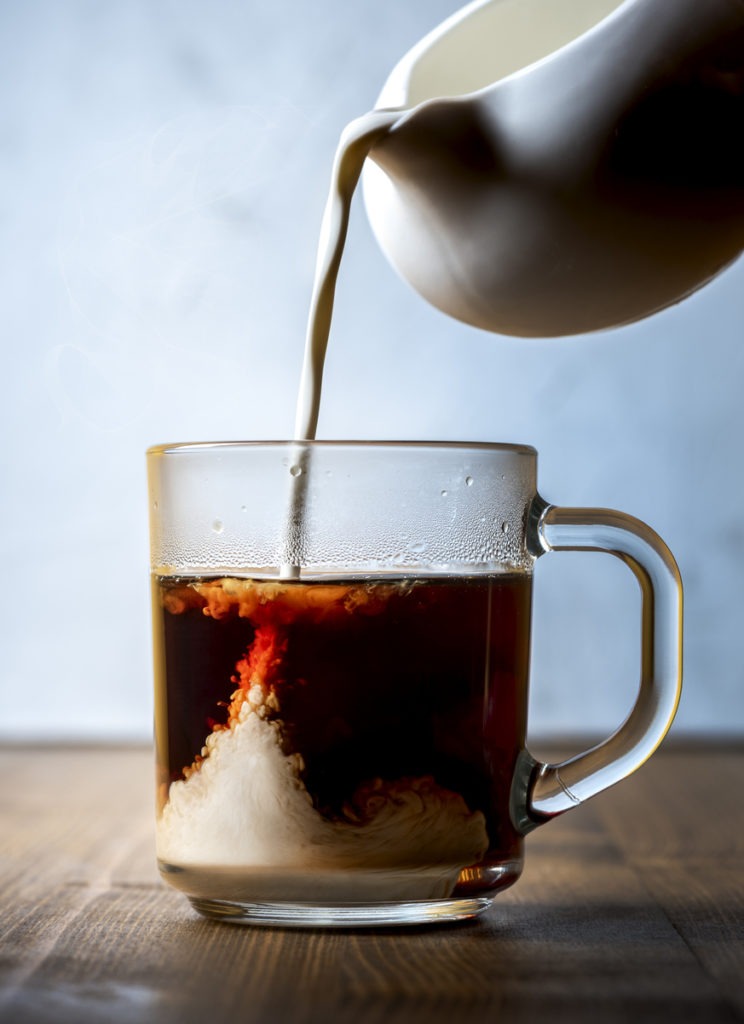One of the most satisfying drinks is coffee. If you enjoy drinking coffee, you may have thought about adding creamer in it to give it a rich, thick texture and flavor. Black coffee enthusiasts undoubtedly cringe at the idea of adding anything to that expertly made cup of coffee they’re currently sipping. However, some people find that they need to add something additional to their mug in order to enjoy their coffee, and that is quite acceptable.
There are a plethora of non-dairy coffee creamer substitutes as well as dairy-based creamers available. You might find it difficult to choose the one that will significantly improve the flavor of your hot or iced beverage with so many variations available. But don’t fret. We’re here to assist you choose what to try by guiding you through the various coffee creamer selections.
Milk vs. Creamer
Aren’t milk and creamer essentially the same thing? Not really. Both are delectable coffee additives, but there are some important differences between them.
The main distinction is that milk is a dairy product, whereas the majority of creamers are not. In addition to having a higher fat content and additional substances like sugar, flavorings, or dyes that aren’t found in milk, creamer also tends to be thicker and creamier than milk.
The way they taste is also a key difference between the two. While milk is a mildly sweet and largely flavorless beverage, creamer is significantly sweeter and frequently flavor-infused, such as with hazelnut or mocha flavors.
Types of Dairy Milk for Coffee
One of the most common ways to make your coffee thicker and creamier is by adding milk. Here are a few of the several milk options you can add to your cup of coffee.
Cow’s Milk
The most typical milk for coffee is this one. It thickens and adds sweetness to your morning drink, and how it tastes mostly relies on the methods used by the farmers to raise the cows, the amount of fat in the milk, and how recently the milk was produced.
Goat’s Milk
Goat’s milk provides an earthy flavor rather than the sweetness of cow’s milk and is easier to digest than cow’s milk. Medium-roasted beans work perfectly with this type of milk.
Buffalo’s Milk
Although not frequently used, buffalo’s milk can make your coffee truly extra special. Buffalo milk is also fatty. Thus, it can give your coffee that much-desired creaminess. If you can find it, give this product a try because it manages to be both sweet and tangy at the same time.
Types of Dairy Milk for Coffee According to Fat Content
The flavor and texture of your coffee may be affected by the amount of fat in the milk you decide to use. Below is a comparison of milk options according to their fat content.
Whole Milk (3%-4% fat content)
This is the milk your barista will probably use unless you specifically request anything different because it gives your coffee a creamier, sweeter flavor. Having between three and four percent fat, whole milk is heavier than some of the milk alternatives.
Reduced-fat Milk or Low-fat Milk (1%-2% fat content)
You can buy milk with as little as 0.5 percent fat, but most reduced-fat milk is in the one- to two-percent range. You may thicken your coffee with this milk without adding too much fat or calories. It strikes a good balance between sweetness and thickness.
Skim Milk (0% fat content)
Since skim milk has no fat, it’s a great complement to morning coffee for people watching their calories. Although somewhat less thick than full or reduced-fat milk, skim milk is significantly sweeter. In that case, this might not be the ideal option if you prefer a creamy cup.
Types of Non-dairy Milk for Coffee
Finding an appropriate substitute for the dairy milk that one normally uses in coffee is one of the main challenges that many people encounter while switching to a plant-based diet. Here are a few non-dairy milk alternatives for your coffee.
Oat Milk
Due to its neutral flavor and resistance to splitting or curdling at relatively high temperatures, oat milk is the most widely used milk for making coffee. Oat milk is a great way to balance out the strong flavors in coffee because it tastes quite similar to cow’s milk. When using oat milk in your coffee, you might want to reduce the quantity of sugar you use because it is a little bit sweeter than dairy milk.
You might want to use a little bit more oat milk in your coffee than you would with cow’s milk because it is slightly less creamy and thinner than cow’s milk (the texture of oat milk is somewhere between 1% and 2% cow’s milk).
Cashew Milk
Since cashew milk is the thickest among non-dairy milks, it is a great alternative for those who like to add cream to their coffee. Moreover, since cashew milk is less nutty than almond milk and has a stronger taste than oat milk, it shouldn’t dominate your coffee too much.
However, cashew milk is relatively more expensive than oat milk. And it might also be a little too sweet for those who don’t typically add sugar to their coffee.
Coconut Milk
Coconut milk has a creamy texture and won’t split in the presence of heat or acid. Many people believe that since coconut flavor is so rich in coconut milk, it will be awful to pair it with coffee. We believe that this is the case because coconut cream, which has a much stronger “coconutty” flavor and is typically used in Southeast Asian curries, is sometimes confused with coconut milk.
Even though coconut milk has a stronger flavor than oat or nut milk, most people find it pleasurable in coffee.
Soy Milk
Since soy milk has the highest protein concentration of any plant-based milk, it will froth up with the most volume. So if you want to prepare longer milk-based coffee drinks like lattes, this is a wonderful option.
Soy milk can split when heated to a high temperature, but that is the only drawback of foaming it. As a result, you should froth it in brief bursts—say, ten seconds of frothing followed by a five-second rest. This should prevent the milk from splitting as a result of excessive heat.
Pea Milk
Compared to oat milk, pea milk produces a finer foam with smaller bubbles. As a result, it’s the ideal choice for making cappuccinos, which typically call for a froth that’s as thin as possible (also known as “microfoam”).
If you don’t intend to create cappuccino particularly, you could be better off using oat milk instead of pea milk because it is less expensive and easier to locate.
Oat milk, cashew milk, and coconut milk are the three best types of milk for adding a thick, creamy texture and a neutral flavor to balance the coffee’s strong, bitter undertones without significantly changing its flavor profile. On the other hand, if you want to make vegan-friendly frothed espresso drinks like latte and cappuccino, the three best vegan-friendly milks to froth are: oat milk, pea milk, and soy milk.
Types of Cream
Another great addition to your cup of coffee is some cream. Similar to milk, the amount of milk fat and calories in the cream you select affects the smoothness and flavor of your coffee.
Half and Half (12% fat content)
One of the most popular add-ins used by American cream enthusiasts in their coffee is half and half, which is made up of equal parts milk and cream. It is the thinnest of all the creams and is thicker and sweeter than whole milk. It provides your coffee with a wonderful blend of sweetness and thickness.
Light Cream (20% fat content)
If whole milk or half and half aren’t thick enough for your liking, consider slightly increasing the fat content with light cream. Although it will add calories, this product, which has a fat content of around 20 percent, is still healthier than some of the heavier alternatives.
Light Whipping Cream (30% fat content)
This cream is the beginning of more thicker and heavier cream alternatives. It also gives your beverage a thicker consistency but still not as thick as whipping cream or heavy cream.
Whipping Cream (35% fat content)
This has a higher percentage of milk fat than the previously stated creams and is much thicker than half and half. Your coffee’s consistency becomes significantly thicker and creamier as a result.
Heavy Cream (38% fat content)
This is the thickest and heaviest option you can get, as its name suggests. Its richness can improve your cup of coffee with a 38 percent (or more!) fat content. A little does, however, go a long way in this case; if you use too much, your coffee may become too thick for you to enjoy.
Types of Non-dairy Cream
Vegan Creamers
These are just a few of the creamers that are suitable for vegans. By utilizing different milk bases, it is free of both lactose and dairy. Compared to dairy creamers, the majority of these creamers are a better choice.
- Almond-based Creamers – These types of creamers come in a variety of flavors and have almond milk as their base.
- Soy Creamers – The base for these creamers is soy milk. One of the healthiest plant-based milks is soy milk.
- Coconut Milk Creamers – These creamers are a healthier alternative for your coffee because they substitute coconut milk for dairy.
Keto Creamers
These are just a few of the creamers that are suitable for vegans. By utilizing different milk bases, it is free of both lactose and dairy. Compared to dairy creamers, the majority of these creamers are a better choice.
- Coconut Cream and Almond Milk – These kinds of creamers are also sugar-free, carb-free, vegan, and gluten-free.
- Keto Specific Cacao Creamers – These creamers are manufactured from ghee, MCT oil, and coconut oil. They contain no carbs and are heavy in fat.
- Superfood Creamers – Have additional ingredients that work to assist you in achieving your Keto diet goals. MCT oil, coconut oil, coconut milk powder, and sea algae are a few examples. They are also free of gluten and dairy.
Types of Creamers for Coffee
Many people add coffee creamers to make their brew thicker. These are available in liquid or powder form. Many coffee creamer varieties are dairy-free, making them ideal for people who struggle with lactose intolerance.
Despite what the name might suggest, creamers aren’t actually cream. They are even sometimes referred to as “coffee whiteners.” But what is it that they are made of if not cream? Coffee creamers are primarily made up of three ingredients: water, sugar (or some other artificial sweetener), and oils. Companies occasionally try to choose healthier ingredients, but other times they don’t. The ingredients in these products are less obvious than those in actual milk or cream, so be sure to carefully read the ingredient list before making a purchase.
The main distinction between liquid and powder creamers is how you store them.
- Powdered Coffee Creamer – Powdered coffee creamers don’t need to be refrigerated, so you can store them in your cupboard or any cool and dry area.
- Liquid Coffee Creamer – Liquid coffee creamers must be stored in the refrigerator once opened. There are, however, shelf stable alternatives, but since they expire less than a month after opening, they’re preferable in high-volume settings – like, coffee shops.
Health Benefits
It is understandable that individuals prefer creamer and milk with their daily cup of coffee given the variety of flavors, sweetness, and creaminess available. It’s crucial to understand, though, that adding creamer, milk, or sweetener can significantly alter the nutritional value of your coffee.
Black coffee by itself has no calories and contains nutritional value and a variety of other benefits to the body. Your coffee’s calorie and sugar content can be quickly increased with the addition of cream and sugar to just one cup. Not only should you watch how much cream and sugar you put in your coffee, but you should also consider the kind of creamer you use. You will get a rich and thick consistency from those with more fat, but you will consume more calories.
It’s not bad to enjoy your cup of coffee with cream or instant coffee with cream as long as you are aware of the nutritional information of the creamer you use and keep your serving sizes to a minimum.
Conclusion
When it comes to adding cream to your coffee, there are several different options. Even if there are many options, it’s still crucial to take the coffee creamer’s fat and calorie level into account to avoid overindulging.
You are free to experiment with the different alternatives to find the best creamer that will work for you. We sincerely hope that the details we provided here helps you understand more about milk, creamers, and alternatives for coffee creamers.


